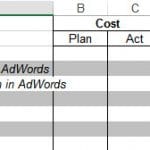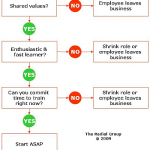Next time you catch yourself grumbling that “I could do it faster myself”…or complaining about a client who “just doesn’t get it”….pull out this article.
Studies show that we remember:
10% of what we read…
20% of what we hear…
30% of what we see…
50% of what we hear AND see simultaneously…
70% of what we hear, see AND say
90% of what we hear, see, say AND do.
Confucius, that wise Chinese philosopher, first offered this insight around 2,000 years ago, when he said:
“I hear and I forget. I see and I remember. I do and I know.”
Here’s what this means in business terms:
Handing someone written documentation on how to bill a new client – they’ll only recall about 10% of it. Telling them how to process new members – they’ll retain about 20%. Showing them how to fill out the forms – 50%. Using a “show and tell” approach – and then having them repeat the process while you observe and provide feedback – gets you to 90%.
Use the five steps of the “Confucius Checklist” to successfully transfer your knowledge to an employee or client:
1) Tell.
Using both written and verbal guidance, tell the person what you want them to know. It may be a business process that you want employees to follow. Or it may be healthy living information for clients.
2) Show.
Let’s say you’re training a new staffer on how to close up every night. Perform the steps yourself, as you normally would – and have the new employee shadow you with a copy of the written instructions. Have her read each step to you out loud as you both complete the process together. (You may find you’ve been skipping some steps yourself!) Prompt them to turn their copy of the instructions into a living document by adding their own notes, clarifications and reminders.
Perhaps you’re leading a healthy living workshop for families. This is a great opportunity to use props that encourage interaction from your customers – for example, real fruits and vegetables, or a scale, or portion equivalency props (like a deck of cards = a serving of chicken). Why stop with pictures of these items in a PowerPoint presentation? Instead, pair the presentation, which has text and graphic cues, with the visual learning that the props encourage.
3) Watch.
The next step in the process of transferring knowledge to someone else is to watch them apply the new information by performing the task or using the new skill themselves.
This time, your staffer takes the lead on closing up for the night. You shadow her, making notes for later feedback on what she’s doing right and where she’s missing something.
To apply this technique in your healthy living workshop, consider activities where participants can actually apply the information you’ve given them. For example, perhaps you could provide a worksheet shaped like a dinner plate and have them sketch out how much room vegetables, grains, proteins, and other meal components should occupy.
Another way to “watch” is to have workshop participants track certain lifestyle activities outside the session in a log that you then review at the next meeting.
4) Give feedback.
Feedback works best when it’s fresh. On the other hand, “death by a thousand nicks” – pinging your staffer with lots of little tweaks and critiques at every step along the way – is incredibly demoralizing to employees.
So accumulate feedback while you’re observing the employee perform the process. Then provide it at well-timed intervals. For example, if your close process has four steps – reconcile cash register, clean restroom, straighten stock, and set alarm – perhaps you can mainly provide comments at the end of each major step.
Base the timing and frequency of your feedback on the employee’s learning style, the urgency of the correction, and its impact on the rest of the process.
For example, a critical mistake made early in the cash reconciliation process probably should be corrected instantly, since it will affect all of the subsequent steps. On the other hand, if your staffer is learning to lead a client session, it may be more appropriate and useful to provide comments after the session is complete.
Remember to ask for her observations as well – what went smoothly and where she feels it could have gone better.
5) Watch again.
We call this the “lather, rinse, repeat” step! You’ve explained the process verbally and in writing. You’ve demonstrated the process. You’ve observed them perform the process. You’ve given feedback on their performance of the process. Now, watch them perform the process again.
Continue this cycle until the employee or client demonstrates mastery of the material.



